|
Centrip Editorial Board
A Journey through Magome-juku's Fall Leaves

Magome-juku is a traditional post town nestled in the Japanese Alps. The historical side of Japan is on full display, and delicious seasonal fall cuisine and the beauty of fall leaves will color your senses. There are many reasons to visit Magome-juku. It has some of the best places to view autumn leaves, like Tsukechi Gorge, Yumori Valley, Nenoue Highlands, and Naegi Castle Ruins. Each spot is nearby and reached easily on any trip to Magome-juku.
Table of Contents
Magome-juku
Each season in Magome-juku wears a different face. In fall, dried persimmons hang from the eaves of homes, and trees planted around the square change to shades of red and yellow. At this particular souvenir shop, igaguri chestnuts come with any purchase.
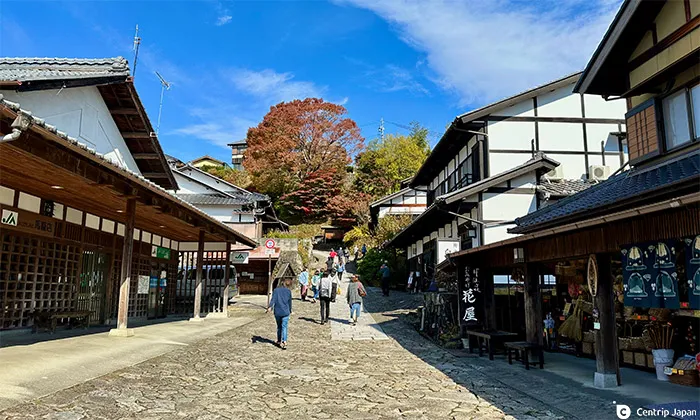 Stone pavement viewed from the entrance below
Stone pavement viewed from the entrance below
 This store offers a gift of igaguri chestnuts with a purchase
This store offers a gift of igaguri chestnuts with a purchase
The townscape of Magome-juku spreads out along a steep slope. Stroll up from the entrance, and enjoy the view of the old townscape and fall atmosphere.
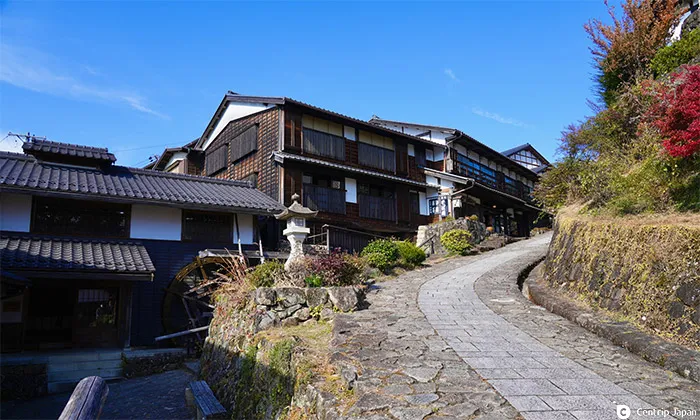 Climbing up the hill while enjoying the townscape
Climbing up the hill while enjoying the townscape
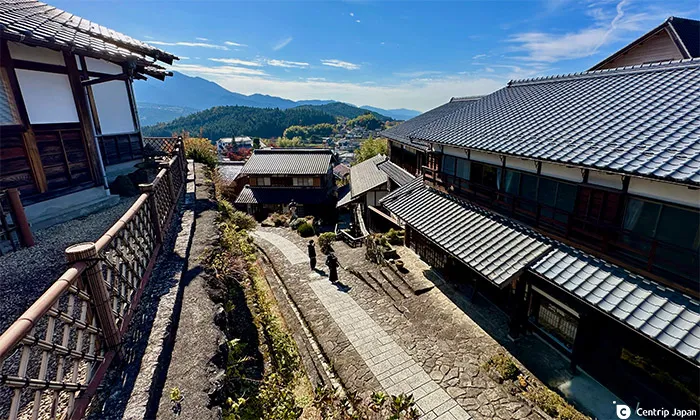 Great pictures from any angle
Great pictures from any angle
Chestnut okowa, a dish of chestnuts and rice, is a must-have snack when strolling around Magome-juku in the fall. Signs for chestnut okowa are everywhere along the streets, from eateries to cafes to whet your appetite.
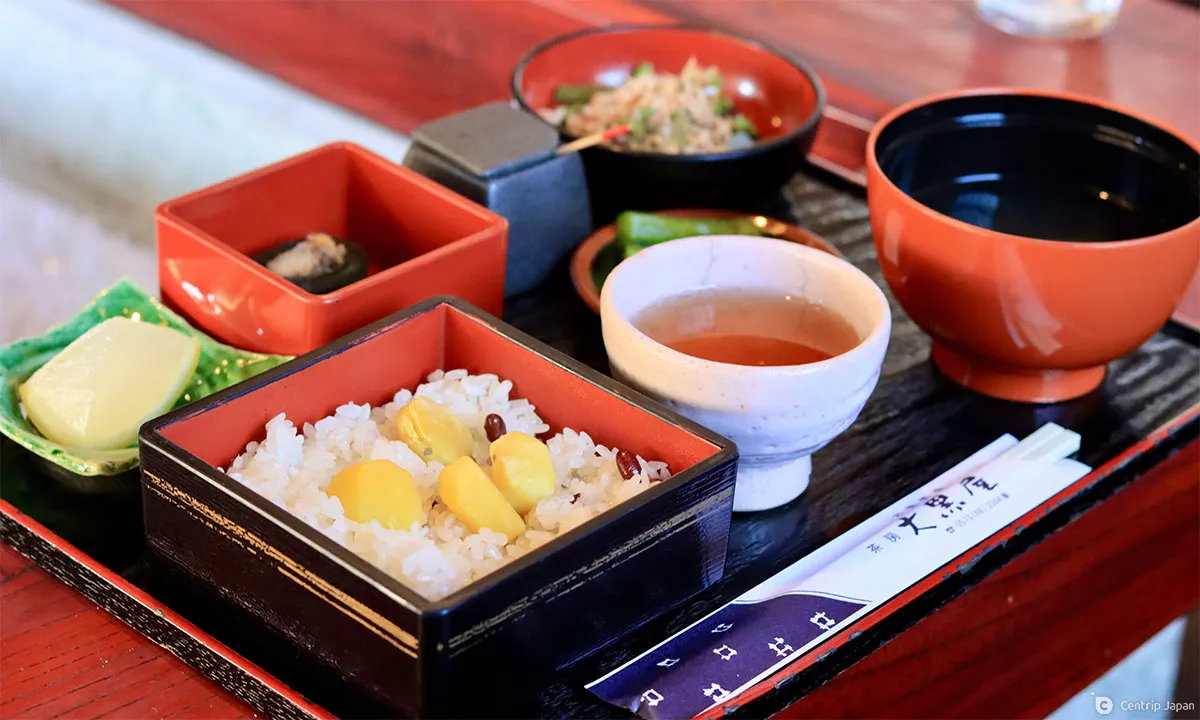 Daikokuya Sabou's specialty, Chestnut Okowa Set Meal
Daikokuya Sabou's specialty, Chestnut Okowa Set Meal
Daikokuya Sabou is one of the many places selling chestnut okowa. Formerly a sake brewery, the store is famous, appearing as Fushimiya, a former name, in Before Dawn, a modern Japanese novel and one of the most famous in Japanese literature.
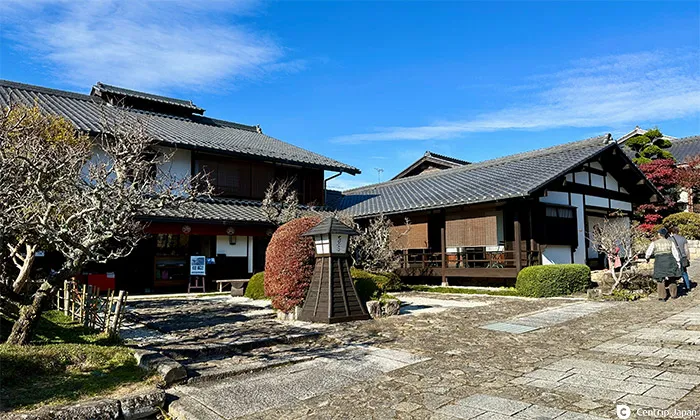 Folk craft store on the left, teahouse on the right
Folk craft store on the left, teahouse on the right
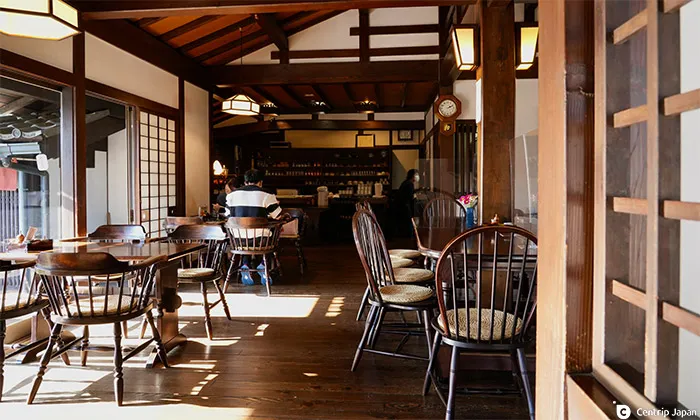 The stylish interior
The stylish interior
The building on the left side of the photo is a store selling folk crafts, and on the right is a modern dining area. A set meal of chestnut okowa is ¥1,500 (tax included). The taste of the chestnut rice is exceptional and served near the window with the soft autumn sunlight shining in.
In the late Edo period (1603-1867), there were as many as 18 inns (for samurai families and commoners) lining the streets of Magome-juku. Many travelers must have rested their feet in this inn town. Were you aware that some of the inns in Magome-juku still allow travelers to stay overnight?
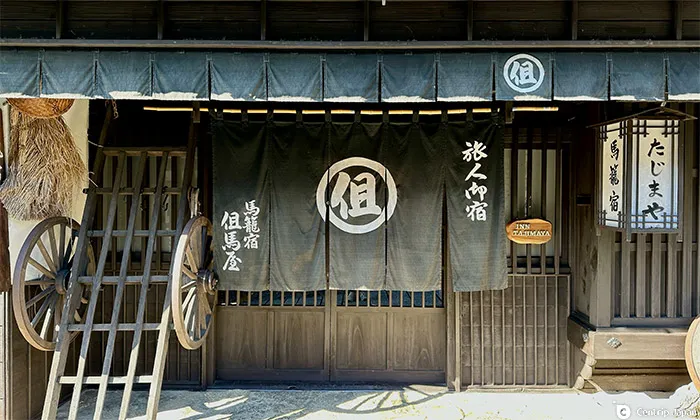 Entrance of Tajimaya facing the street of Magome-juku
Entrance of Tajimaya facing the street of Magome-juku
 Tajimaya's hearth
Tajimaya's hearth
One such inn, Tajimaya, is on the mid-point of the slope of Magome-juku.
After passing through the quaint noren curtain and opening the sliding door, you will see shiny polished floors and a 120-year-old hearth. Together it makes you feel as if you went back in time. For dinner, healthy dishes featuring local pesticide-free vegetables and wild plants. A stay at the inn offers a chance to experience the allure of Magome-juku.
Shimada Park, near the lower entrance to Magome-juku, is home to many Japanese maples and is illuminated for a limited time each year in the fall. There are several beautiful points with maple trees in and around Magome-juku, so take your time and explore the area.
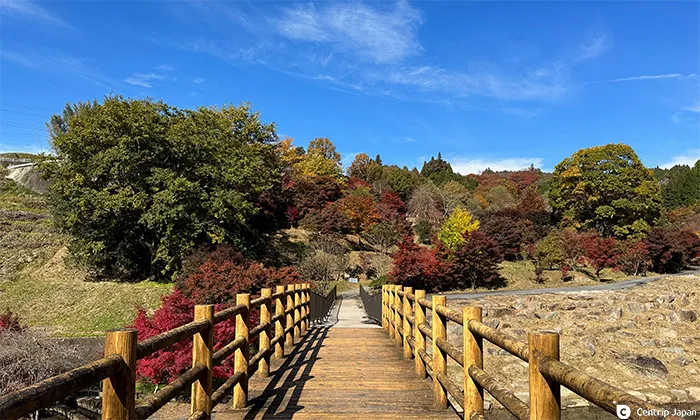 Shimada Park
Shimada Park
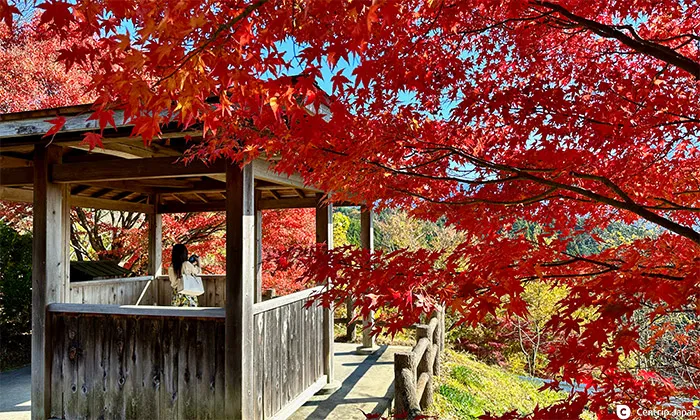 Near the parking lot at the upper entrance
Near the parking lot at the upper entrance
The distance from Magome-juku to the neighboring Tsumago-juku is about 8.8 km, and we recommend taking the two-hour hike. Check here for more information on hiking at Magome Pass.
Tsukechi Gorge
And if you like hiking, the next stop is Tsukechi Gorge to the north of Magome-juku. The Tsukechi River flows through the gorge, and the waters are crystal clear all the way down to the riverbed, where visitors can experience the natural beauty of Japan in each season.
 The maple trees at the entrance of Fudo Park are also magnificent
The maple trees at the entrance of Fudo Park are also magnificent
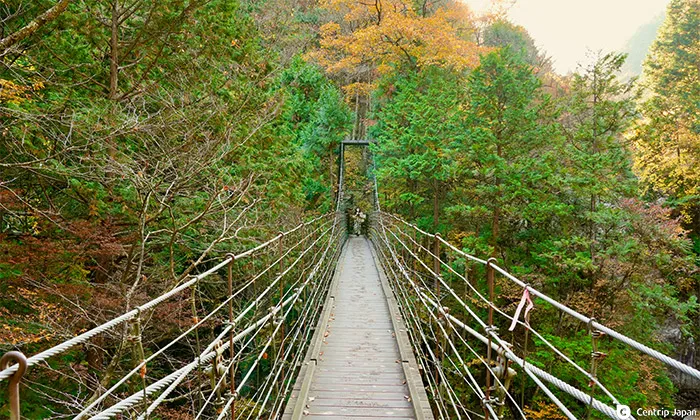 Tour the falls while crossing the suspension bridge
Tour the falls while crossing the suspension bridge
The first stop on the autumn stroll through Tsukechi Gorge is Fudo Park, which has a 40-minute walking course that takes you past two waterfalls while crossing a suspension bridge.
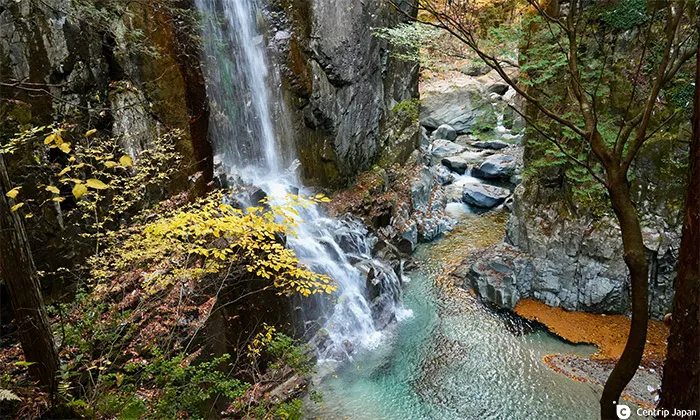 The waterfall basin of Kannon Falls, which is crystal clear to the bottom of the river
The waterfall basin of Kannon Falls, which is crystal clear to the bottom of the river
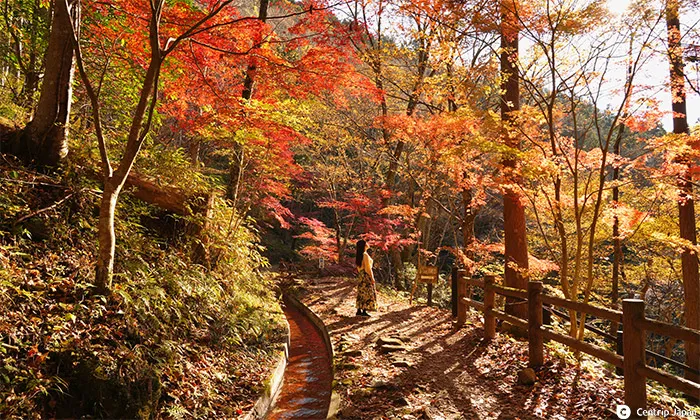 The area around the canal is a photo spot
The area around the canal is a photo spot
The canals that run through the park are beautiful, and the overhanging trees create a feeling of walking through a tunnel of maple leaves where you can unwind as you walk past rays of sunlight filtering through the fall leaves before stopping to listen to the murmuring of the water passing through the canals.
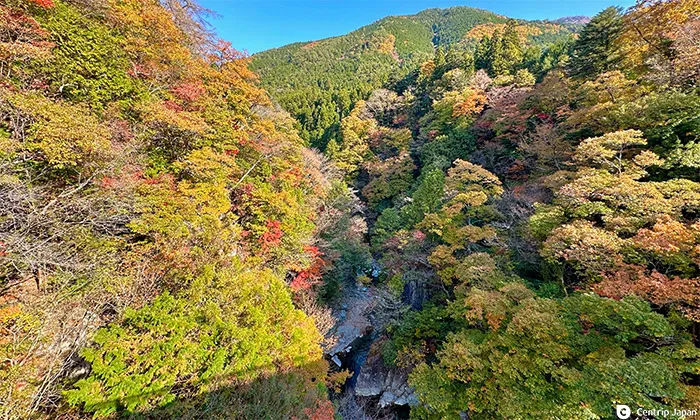 Upstream view from Seme Bridge
Upstream view from Seme Bridge
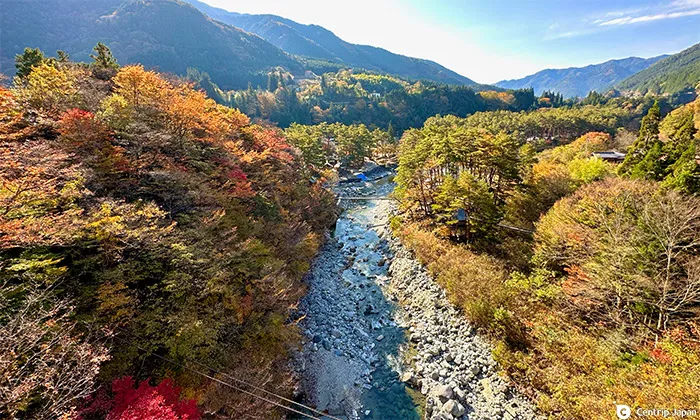 Downstream view from Seme Bridge
Downstream view from Seme Bridge
Two to three kilometers away from Fudo Park, with a remarkable autumn view of the Tsukechi River from the Seme and Hontani Bridges. Try to stop by on your way back from Fudo Park.
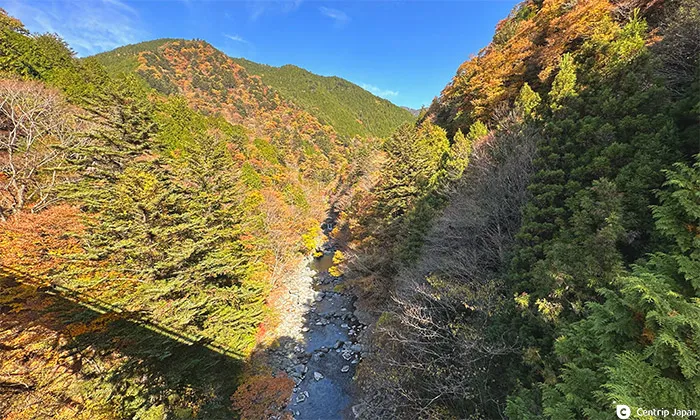 Upstream view from Hontani Bridge
Upstream view from Hontani Bridge
 Downstream view from Hontani Bridge
Downstream view from Hontani Bridge
Yumori Valley
Yumori Valley, several kilometers south of Tsukechi Gorge, is known for its beautiful autumn foliage and the Yumori Maple Festival, held every fall. The area bustles with many tourists during the festival.
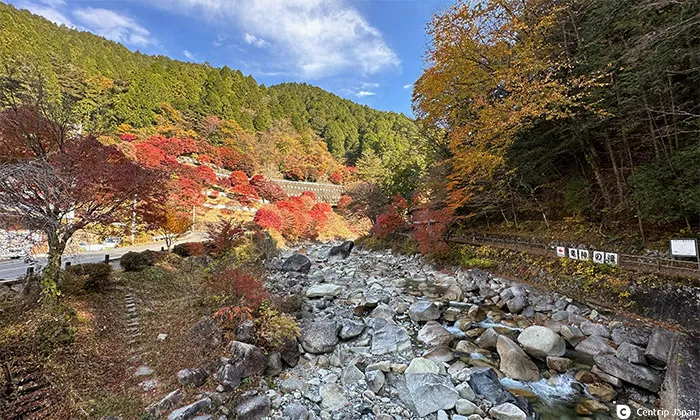 View from Seseragi Bridge
View from Seseragi Bridge
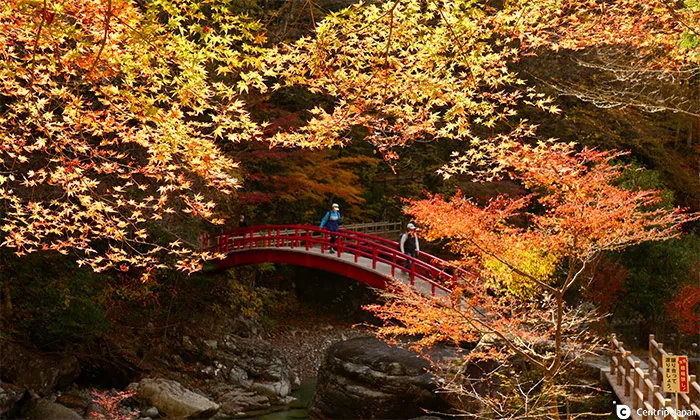 Momiji bridge and the autumn leaves covering it are as beautiful as a picture postcard
Momiji bridge and the autumn leaves covering it are as beautiful as a picture postcard
Starting from the parking lot of Yumori Valley, there is a 1.7-km walking course that takes about 40 minutes from start to finish. This course is an easy way to enjoy an autumn nature walk.
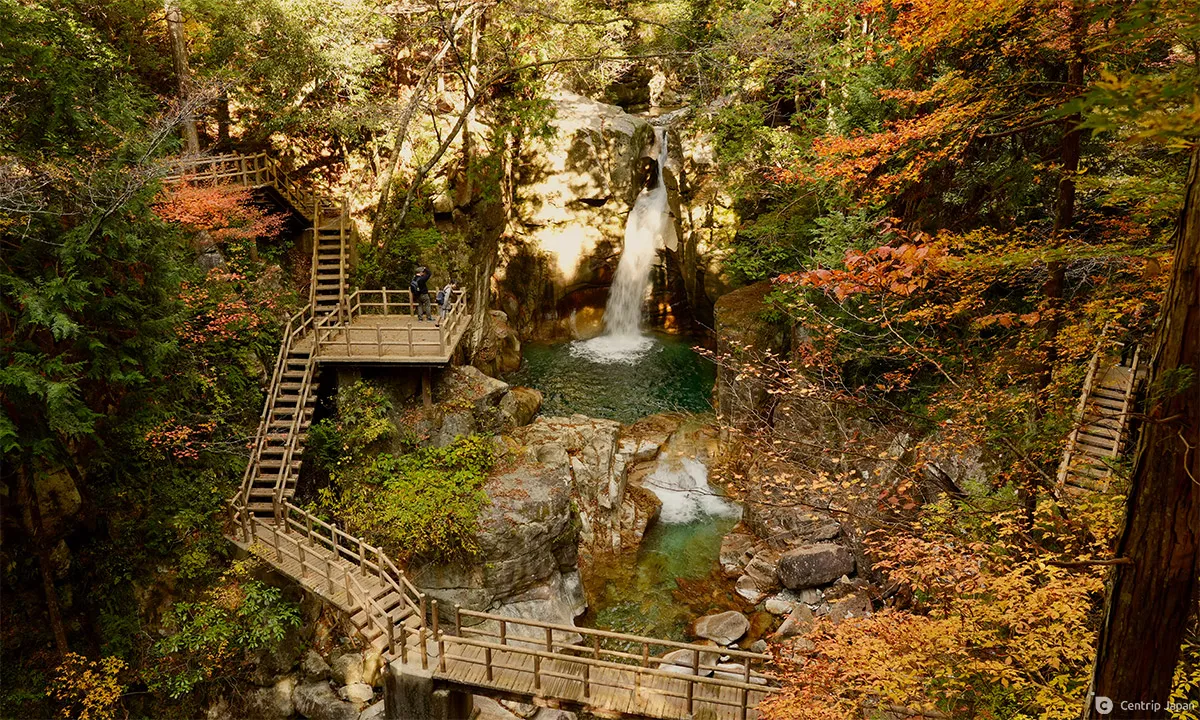 Bridges have been built around Ryujin no Taki Falls to cross the mountain stream
Bridges have been built around Ryujin no Taki Falls to cross the mountain stream
The highlight of Yumori Valley is Ryujin no Taki Falls, regarded as a power spot. The intricate wooden bridges and stairs around the falls look like a set piece from a film or video game.
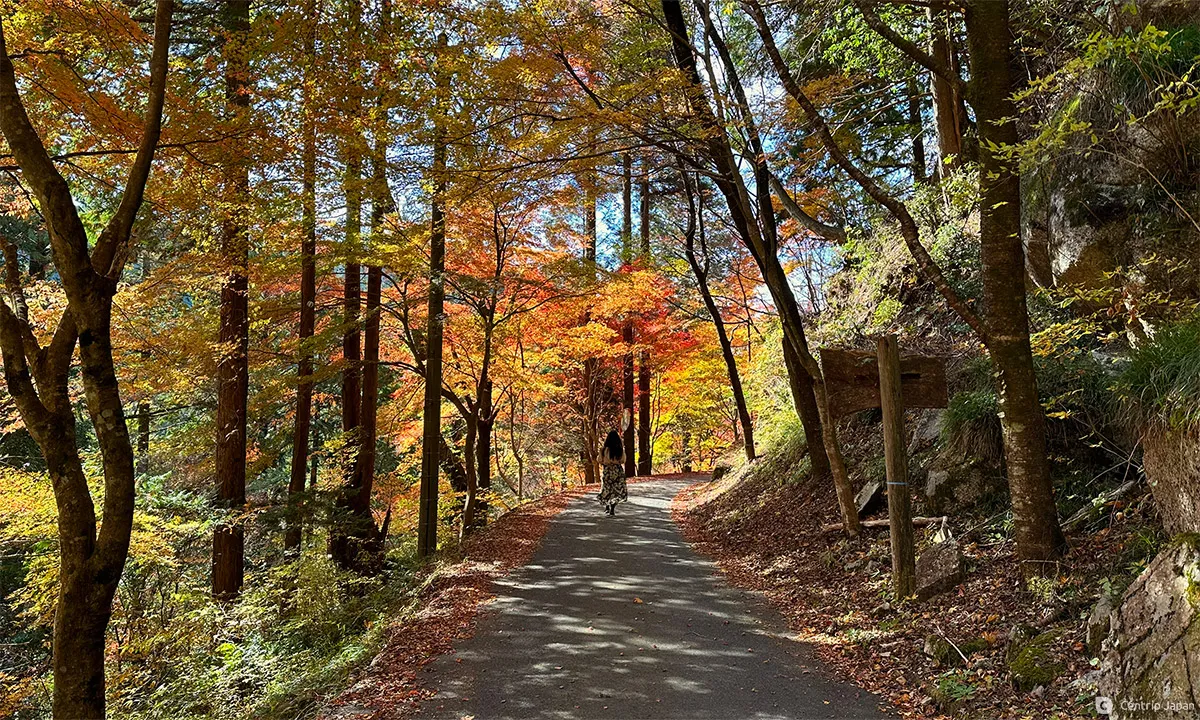 Go over Ryujin no Taki Falls and return to the parking lot via the walking trail
Go over Ryujin no Taki Falls and return to the parking lot via the walking trail
The walking path from the waterfall back to the parking lot is beautifully maintained and looks photogenic from the high point to the parking lot overlooking the waterfall. At a stall in the parking lot, gohei mochi (rice cakes) in the shape of a maple leaf is sold ( ¥300 per piece).
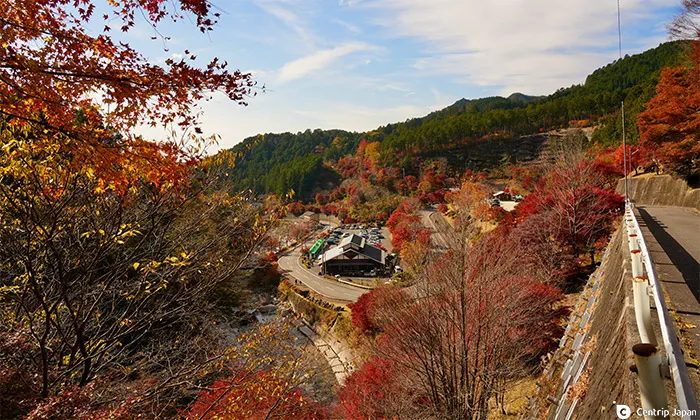 Parking lot seen from the promenade
Parking lot seen from the promenade
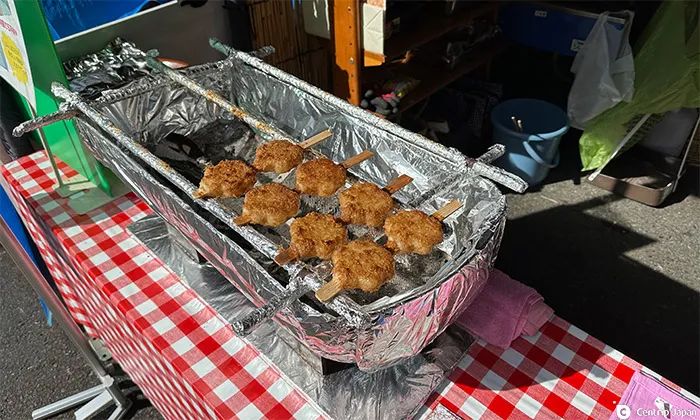 Gohei mochi rice cake in the shape of a maple leaf
Gohei mochi rice cake in the shape of a maple leaf
Naegi Castle Ruins
Naegi Castle Ruins, west of Magome-juku, and built atop a rocky hill that rises along the Kiso River, are one of the most admired castle ruins in the country. In recent years, it trended on social media due to its similarity to the world heritage site Machu Picchu.
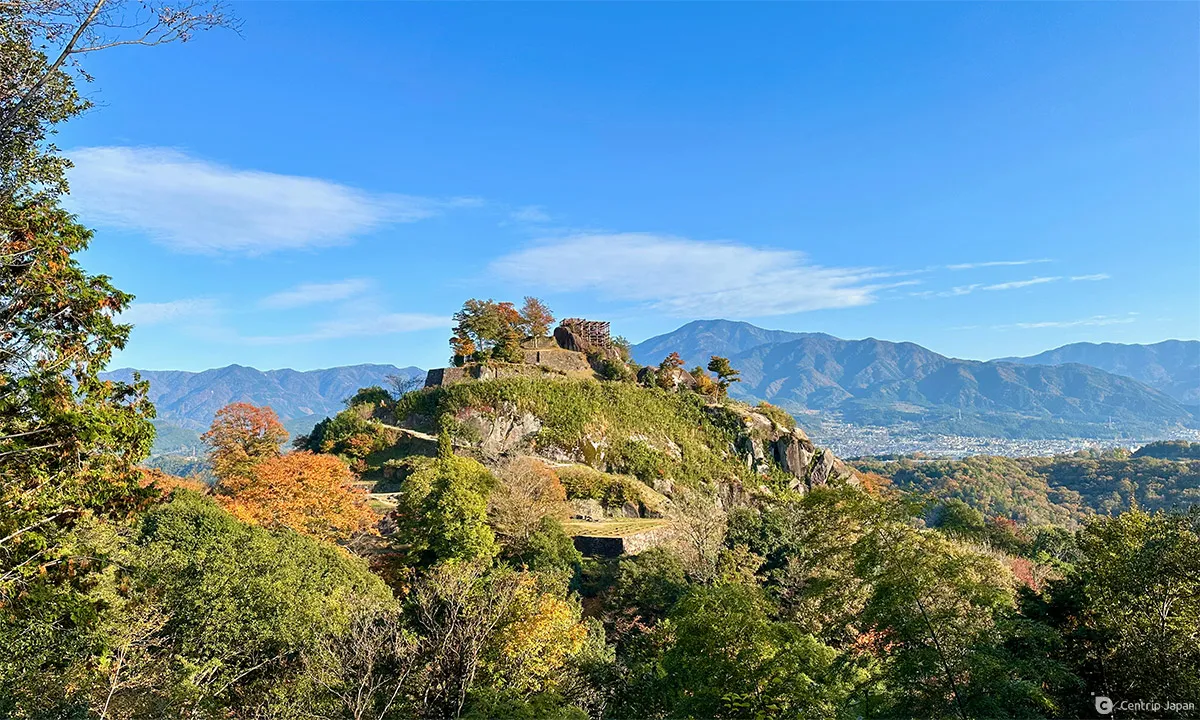 Naegi Castle Ruins surrounded by autumn-colored trees
Naegi Castle Ruins surrounded by autumn-colored trees
Naegi Castle Ruins are famous for their cherry blossoms in the spring and autumn leaves in the fall. It is about 25 minutes from the parking lot of Naegi Toyama Historical Museum to the observatory of Naegi Castle. After climbing a steep slope, the view opens up, revealing the stone walls surrounding a huge rock pile and the observation platform built on the ruins of the castle tower.
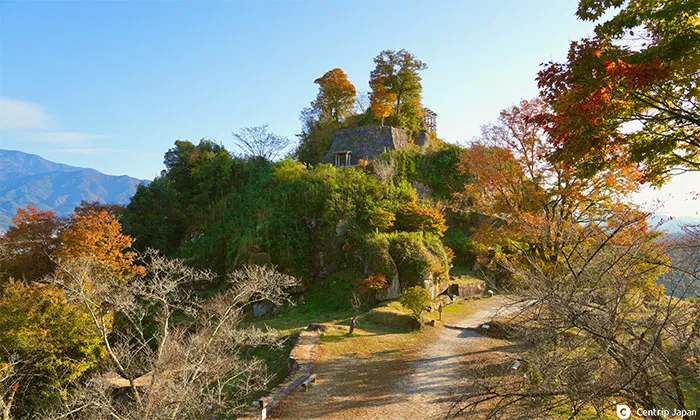 View of the keep from Ooyagura
View of the keep from Ooyagura
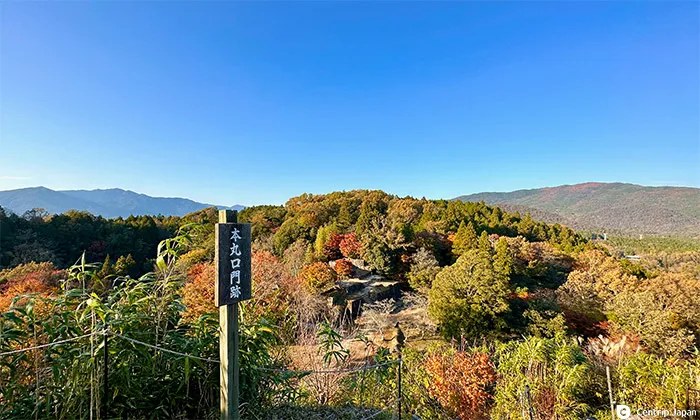 Ooyagura viewed from the keep's observatory
Ooyagura viewed from the keep's observatory
At the site of the castle tower is an observatory built upon the pillar holes that have existed since the castle's construction. The mountains surrounding the castle and Nakatsugawa City are visible from the observatory. A spectacular 360-degree view of the mountains draped in red and yellow, as far as the eye can see.
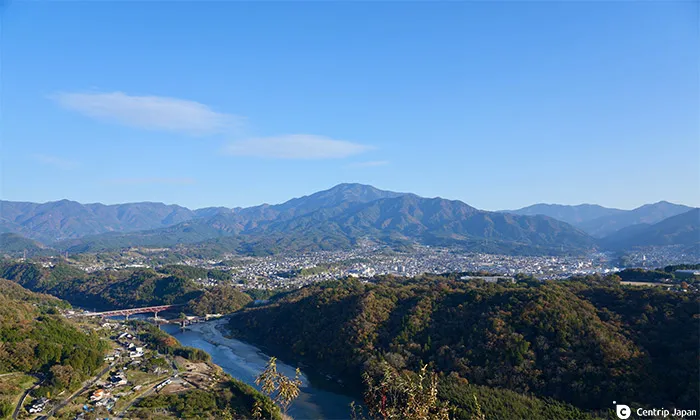 Nakatsugawa city center and Mt. Ena seen from the castle tower observatory
Nakatsugawa city center and Mt. Ena seen from the castle tower observatory
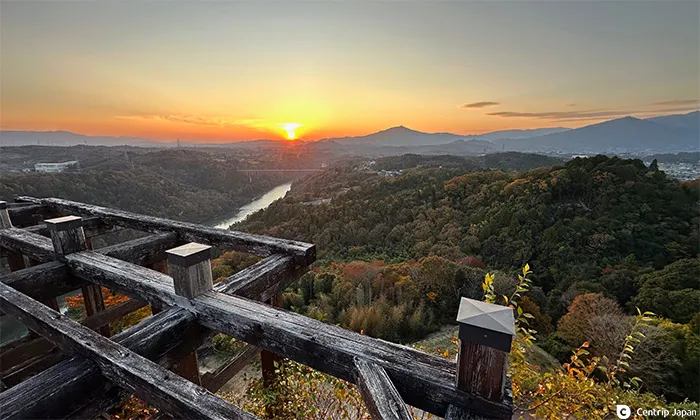 Sunset from the observatory of the castle tower
Sunset from the observatory of the castle tower
Nenoue Highlands
The last autumn foliage spot is Nenoue Highlands, at an altitude of about 1,000 meters. There are two lakes in the highlands, and the fall leaves along the shore of the smaller Lake Nenoue are especially beautiful.
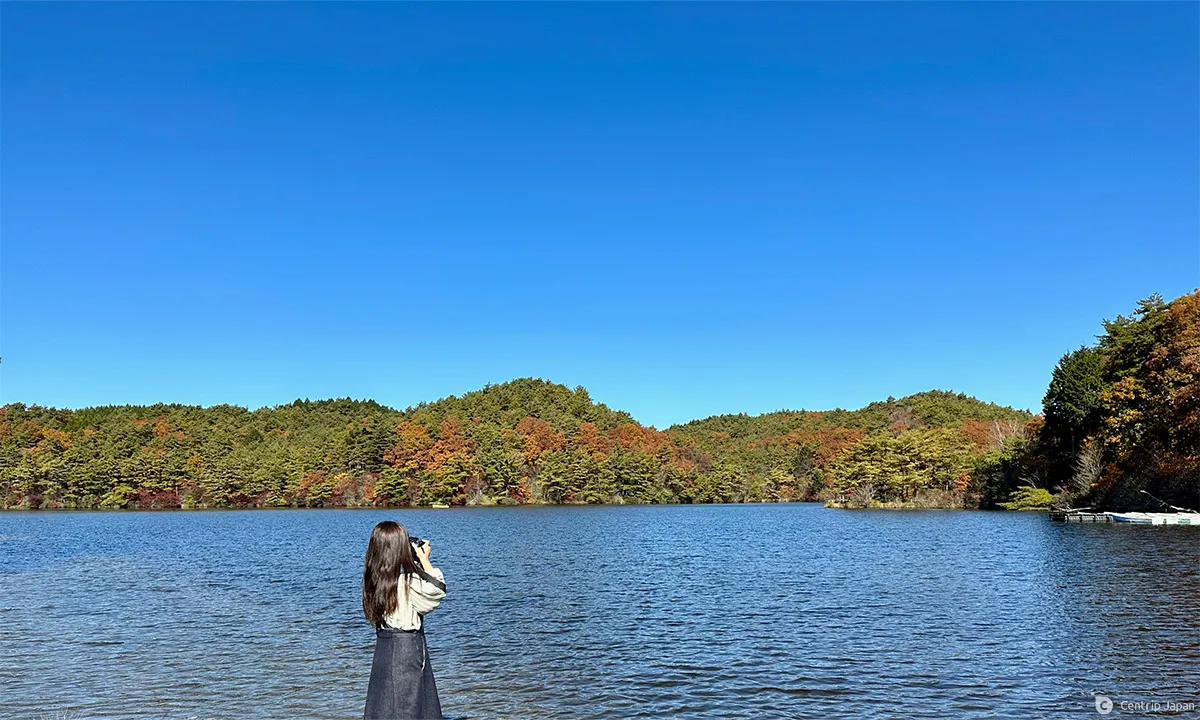 Lake Nenoue surrounded by autumn leaves
Lake Nenoue surrounded by autumn leaves
A promenade surrounds the lake, and it takes about 40 minutes to complete a round trip. There are wetlands with wooden paths and trails in the forest, the course is varied and enjoyable, and there is no difference in elevation, making it easy to enjoy a stroll.
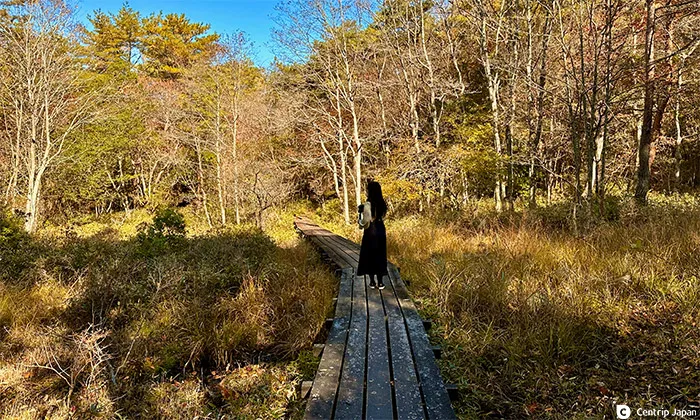 Wooden path passed through marsh
Wooden path passed through marsh
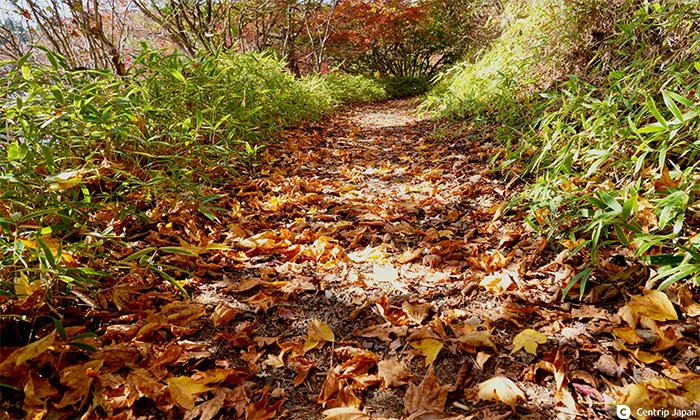 Crunching through the fallen leaves
Crunching through the fallen leaves
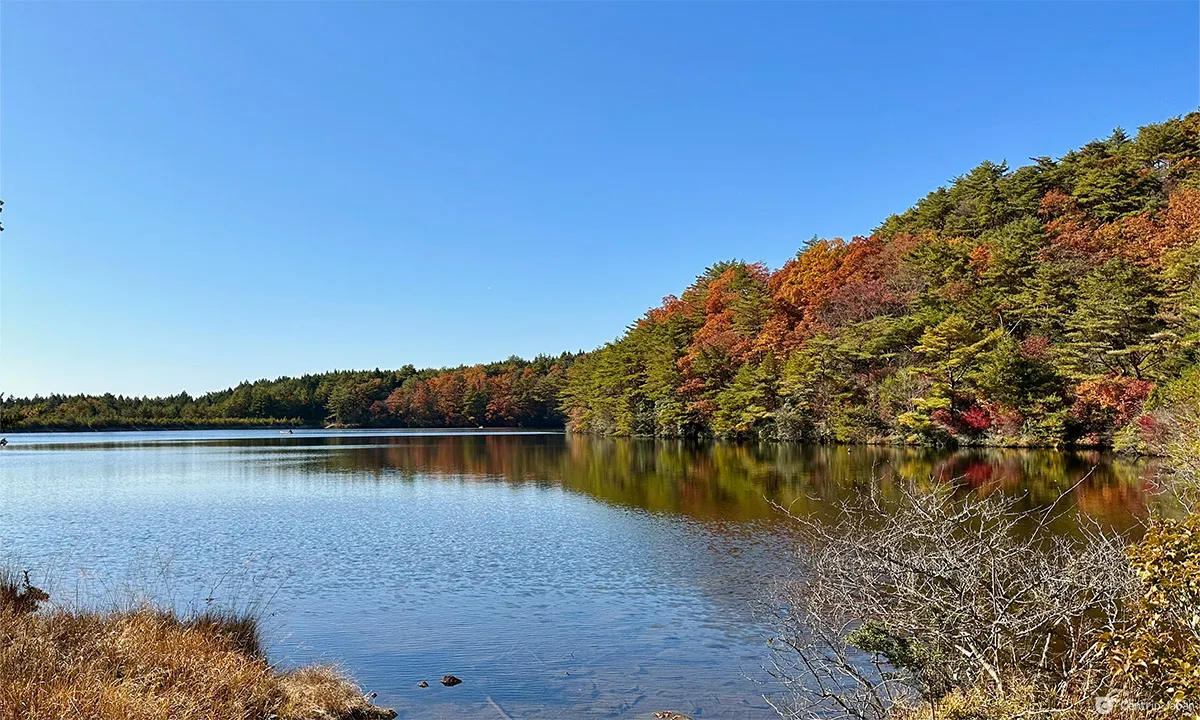 The reflection of the autumn leaves on the lake is beautiful
The reflection of the autumn leaves on the lake is beautiful
Experience Making Kurikinton in Chicory Village
For the last memory of your autumn trip, how about trying your hand at making kurikinton (sweetened chestnuts)? You can try it out at Chicory Village, just off the Nakatsugawa IC, so you can stop by before getting on the expressway as you head home.
 Chicory Village is a food complex to eat, buy, and experience food
Chicory Village is a food complex to eat, buy, and experience food
Kurikinton is made by kneading boiled chestnuts with sugar and squeezing the dough with a cotton cloth to form a unique shape. At Chicory Village, visitors can experience the latter half of this process, from the squeezing to the packaging of the kurikinton in washi paper.
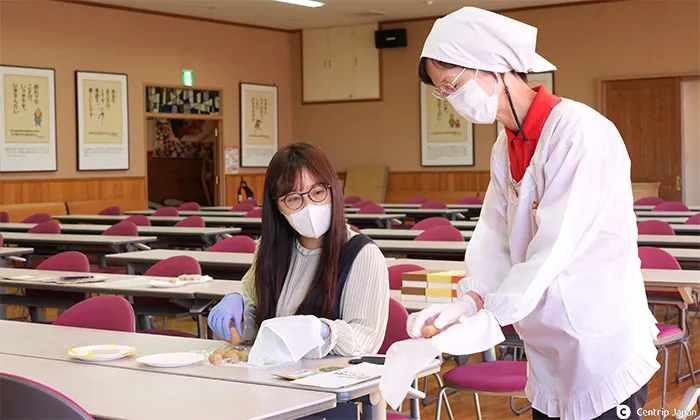 They teach you the tricks of the trade in an easy-to-understand way
They teach you the tricks of the trade in an easy-to-understand way
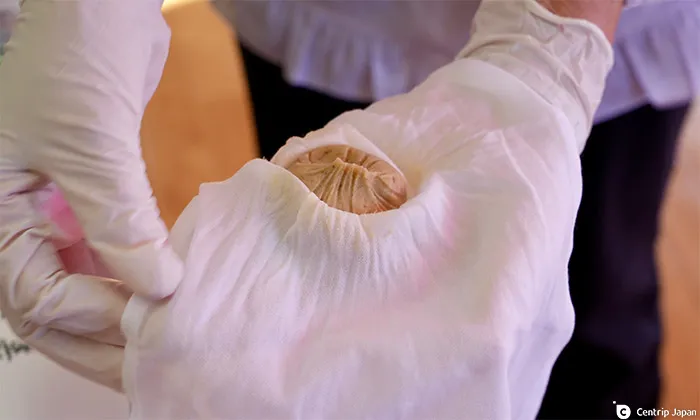 Seems easy, but...
Seems easy, but...
The experience takes about 45 minutes. Getting the shape right is hard at first, but you will gradually get the hang of it, making two or three pieces at a time. You can take home six kurikinton that you made yourself as souvenirs.
 Little by little, it becomes a kurikinton
Little by little, it becomes a kurikinton
 Choose your favorite color and box it up
Choose your favorite color and box it up
The kurikinton-making experience requires a reservation at least one day in advance and costs ¥1,600 per person (tax included). Your original kurikinton will make a great souvenir to remember your trip!
Wrap-up
Magome-juku in autumn is especially enjoyable to visit, combined with the unique tastes of fall. In addition, Magome-juku is dotted with scenic spots to view autumn foliage. We hope you enjoy a fall drive and all the fall foliage spots.
Please refer to this article for more information on touring around the Nakasendo post towns on the Nakasendo.
Click here to get the latest information on Central Japan.Centrip Japan - Nagoya and Chubu Information

